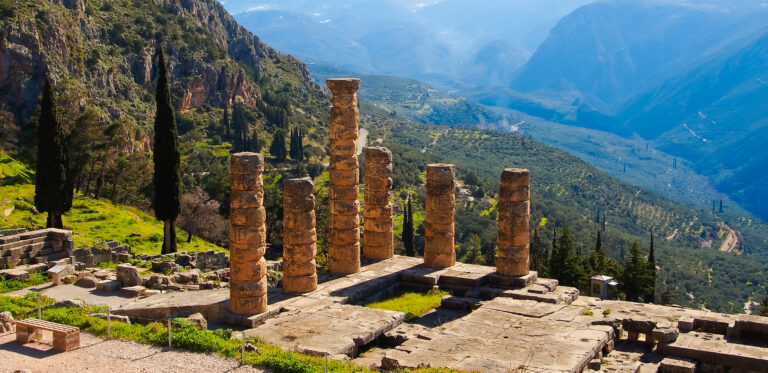For the ancient Greeks, Delphi was the very centre of the world, marked by a sacred stone called the Ompholos (the navel). At this deeply spiritual site, pilgrims from all over the classical world visited to receive the prophecies and divine advice of the god Apollo, as interpreted by Pythia, the high priestess who was consulted even by heads of state before important decisions were made. Until today, the story of the Delphic Oracle is known to every schoolchild in Greece and indeed, the very name Pythia has been passed down as a byword for prophecy.
Today, the lush, sprawling ancient site with majestic marble monuments that gleam in the sun and beautifully preserved areas like those of the Tholos of Athena Pronoia, the Temple of Apollo and the ancient Gymnasium and Stadium remain magic and mystical, not least because of the magnificent setting on the slopes of Mt. Parnassos, looking over an endless swathe of olive groves that sweep down to the Gulf of Itea.
Delphi is listed by UNESCO as a World Heritage Site because of its prominent status in the ancient world, a fact evidenced by the many fine treasuries built there by the Greek city states to house votive offerings, and at 180 kilometres (a two-and-a-half-hour drive) from Athens, a visit there is on nearly every tour itinerary for good reason. Out of sight of the modern village, a small settlement with its own charms, the 10-minute walk to Delphi reveals an astonishing ancient world at the place where heaven and earth were said to meet, and man could talk to the gods.
Ask me anything
Explore related questions





